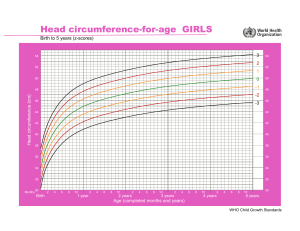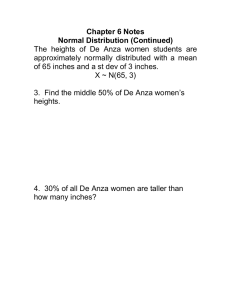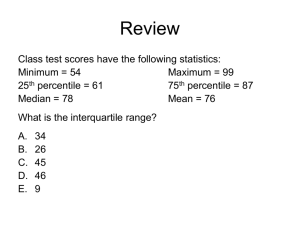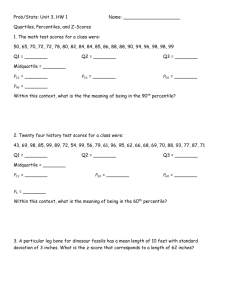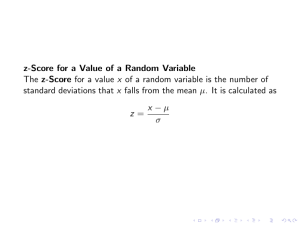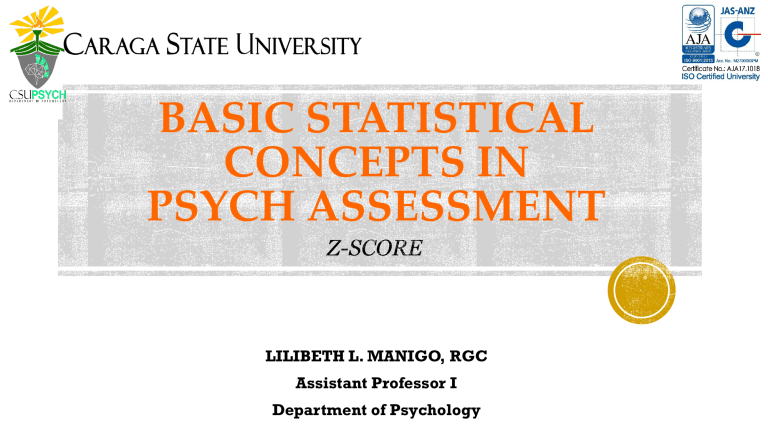
BASIC STATISTICAL CONCEPTS IN PSYCH ASSESSMENT LILIBETH L. MANIGO, RGC Assistant Professor I Department of Psychology ▪ Researchers usually don’t know how to interpret someone’s raw score: Usually, we won’t know whether, in nature, a score should be considered high or low, good, bad, or what. Instead, the best we can do is compare a score to the other scores in the distribution, describing the score’s relative standing. ▪ Relative standing reflects the systematic evaluation of a score relative to the sample or population in which the score occurs. The way to calculate the relative standing of a score is to transform it into a z-score. ▪ With z-scores we can easily determine the underlying raw score’s location in a distribution, its relative and simple frequency, and its percentile. All of this helps us to know whether the individual’s raw score was relatively good, bad, or in-between. ▪ First, they were somewhat subjective and imprecise. ▪ Second, to get them we had to look at all scores in the distribution. ▪ However, recall that the point of statistics is to accurately summarize our data so that we don’t need to look at every score. ▪ The way to obtain the above information, but more precisely and without looking at every score, is to compute each man’s z-score. ▪ A z- score describes a score in terms of how much it is above or below the average. ▪ A z-score is the distance a raw score is from the mean when measured in standard deviations. ▪ A z-score always has two components: (1) either a positive or negative sign which indicates whether the raw score is above or below the mean, and (2) the absolute value of the z-score which indicates how far the score lies from the mean when measured in standard deviations. ▪ Like any raw score, a z-score is a location on the distribution. ▪ However, the important part is that a z-score also simultaneously communicates its distance from the mean. By knowing where a score is relative to the mean, we know the score’s relative standing within the distribution. ▪ A z-distribution is the distribution produced by transforming all raw scores in the data into z-scores. ▪ A “+” indicates that the z-score (and raw score) is above and graphed to the right of the mean. Positive z-scores become increasingly larger as we proceed farther to the right. Larger positive z-scores (and their corresponding raw scores) occur less frequently. ▪ Conversely, a “-” indicates that the z-score (and raw score) is below and graphed to the left of the mean. Negative z-scores become increasingly larger as we proceed farther to the left. Larger negative z-scores (and their corresponding raw scores) occur less frequently. ▪ However, as shown, most of the z-scores are between -3 and +3. ▪ A third important use of z-scores is for computing the relative frequency of raw scores. ▪ Relative frequency is the proportion of time that a score occurs, and that relative frequency can be computed using the proportion of the total area under the curve. ▪ We can use the z-distribution to determine relative frequency because, as we’ve seen, when raw scores produce the same z-score they are at the same location on their distributions.

